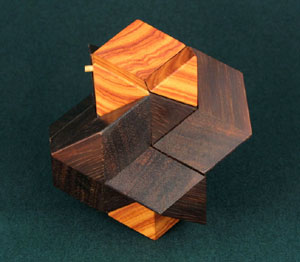
Larger Photograph (72.0K)
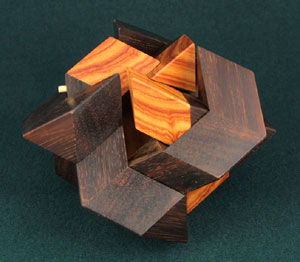
Larger Photograph (79.7K)
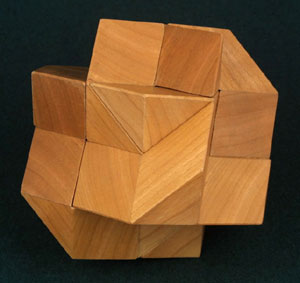
Larger Photograph (51.1K)
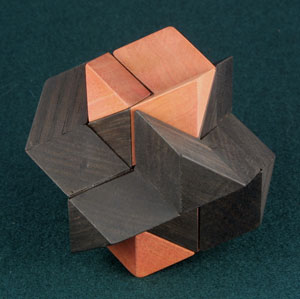
Larger Photograph (95.9K)
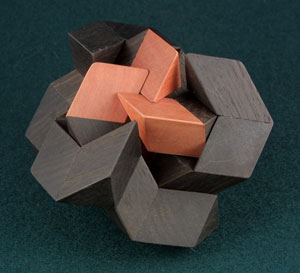
Larger Photograph (88.8K)
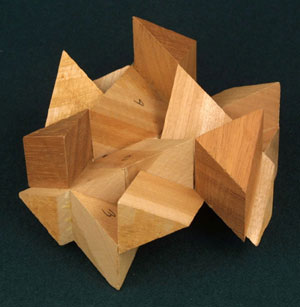
Larger Photograph (61.0K)
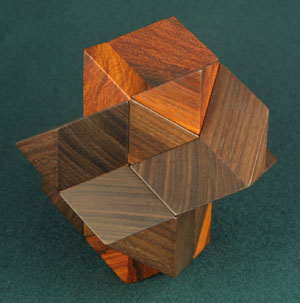
Larger Photograph (88.7K)
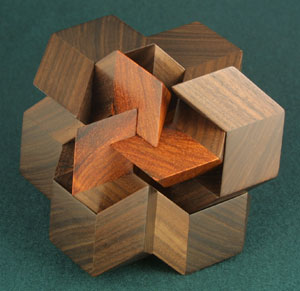
Larger Photograph (87.3K)
| Designer | : | Stewart Coffin | ||
| Craftsman | : | Stewart Coffin (1st, 2nd, 3rd & 6th) Tom Lensch (4th & 5th) Lee Krasnow (7th & 8th) | ||
| Category | : | Interlocking | ||
| Material | : | Brazilian Rosewood & Tulipwood (1st & 2nd) Cherry (3rd) Gaboon Ebony & Pink Ivory (4th & 5th) Bolivian Rosewood & Cambodian Rosewood (7th & 8th) | ||
| Pieces | : | 6 | ||
|
A coordinate motion puzzle. It uses six pieces, of which three are indentical and the other three are their reflexive pairs.
One of the pieces has a hole for a removable pin that keeps the puzzle from coming all the way apart. The puzzle can be assembled two ways. One is fairly easy and not the objective. The other requires that all six pieces come together at once. Getting them all at their extreme positions so they can begin to come together is a nearly impossible dexterity problem. Stewart even sold a jig to assist in assembly. Once together, it can be made to expand apart by squeezing with properly placed fingers. That's where the pin comes into play. Stewart made 40 in 1982 and 1983, some of which have probably never been assembled. Number 39 in his numbering system. He also made 30 assembly jigs (6th photograph). Number 39A in his numbering system. The 1st, 3rd and 4th photographs show the Rosebud totally closed. The 2nd & 5th photographs show it opened about halfway.
| ||||
